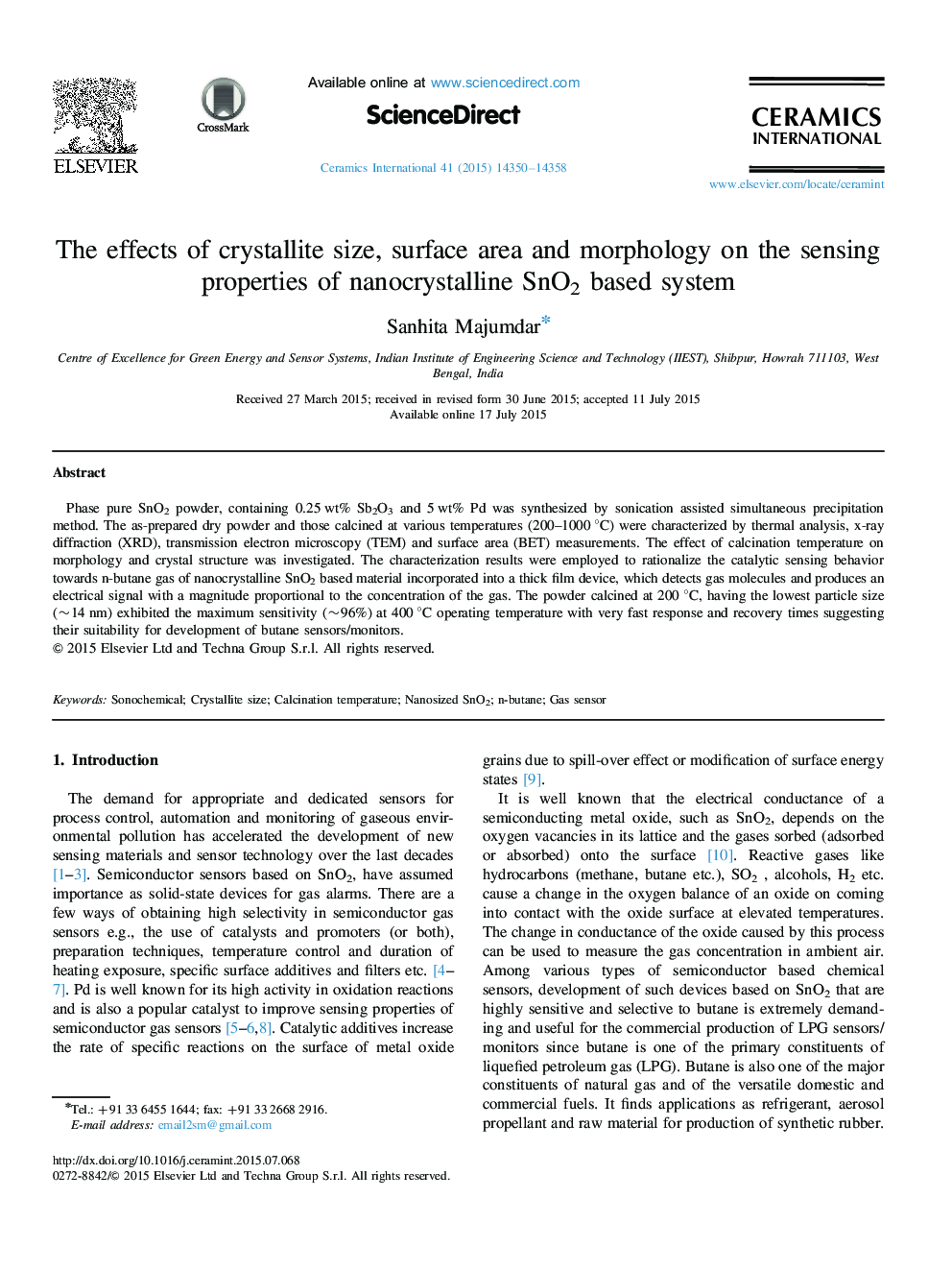| Article ID | Journal | Published Year | Pages | File Type |
|---|---|---|---|---|
| 1459350 | Ceramics International | 2015 | 9 Pages |
Phase pure SnO2 powder, containing 0.25 wt% Sb2O3 and 5 wt% Pd was synthesized by sonication assisted simultaneous precipitation method. The as-prepared dry powder and those calcined at various temperatures (200–1000 °C) were characterized by thermal analysis, x-ray diffraction (XRD), transmission electron microscopy (TEM) and surface area (BET) measurements. The effect of calcination temperature on morphology and crystal structure was investigated. The characterization results were employed to rationalize the catalytic sensing behavior towards n-butane gas of nanocrystalline SnO2 based material incorporated into a thick film device, which detects gas molecules and produces an electrical signal with a magnitude proportional to the concentration of the gas. The powder calcined at 200 °C, having the lowest particle size (~14 nm) exhibited the maximum sensitivity (~96%) at 400 °C operating temperature with very fast response and recovery times suggesting their suitability for development of butane sensors/monitors.
